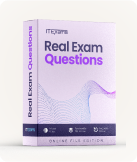Cisco 400-251 - CCIE Security Written Exam Exam
Page: 1 / 62
Total 307 questions
Question #1 (Topic: Topic 1)
What are the two different modes in which Private AMP cloud can be deployed? (Choose two.)
A. Cloud-Proxy Mode
B. Internal Mode
C. Air Gap Mode
D. Hybrid Mode
E. Public Mode
F. External Mode
Answer: AC
Question #2 (Topic: Topic 1)
View the Exhibit.
[Cisco-400-251-1.0/xmlfile-2_1.png]
Refer to the exhibit. Which two effects of this configuration are true? (Choose two.)
[Cisco-400-251-1.0/xmlfile-2_1.png]
Refer to the exhibit. Which two effects of this configuration are true? (Choose two.)
A. User five can view usernames and passwords
B. User superuser can view the configuration
C. User superuser can change usernames and passwords
D. User superuser can view usernames and passwords
E. User five can execute the show run command
F. User cisco can view usernames and passwords
Answer: BD
Question #3 (Topic: Topic 1)
Which three commands can you use to configure VXLAN on a Cisco ASA firewall? (Choose three.)
A. default-mcast-group
B. set ip next-hop verify-availability
C. sysopt connection tcpmss
D. segment-id
E. inspect vxlan
F. nve-only
Answer: ADF
Question #4 (Topic: Topic 1)
Which Cisco ISE profiler service probe can collect information about Cisco Discovery Protocol?
A. SNMP Query
B. DCHP SPAN
C. DCHP
D. HTTP
E. RADIUS
F. NetFlow
Answer: F
Question #5 (Topic: Topic 1)
Which type of attack uses a large number of spoofed MAC addresses to emulate wireless clients?
A. DoS against an access point
B. DoS against a client station
C. chopchop attack
D. Airsnarf attack
E. device-probing attack
F. authentication-failure attack
Answer: A
